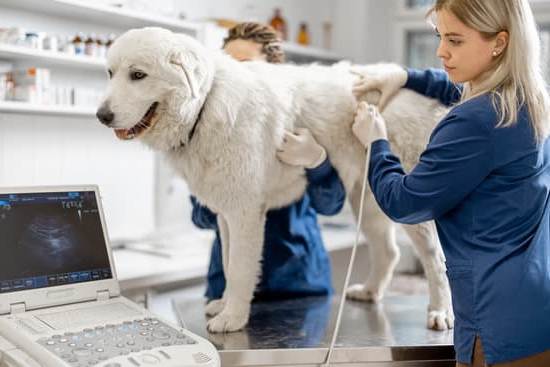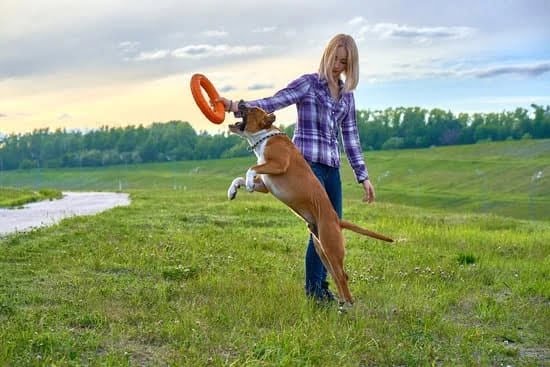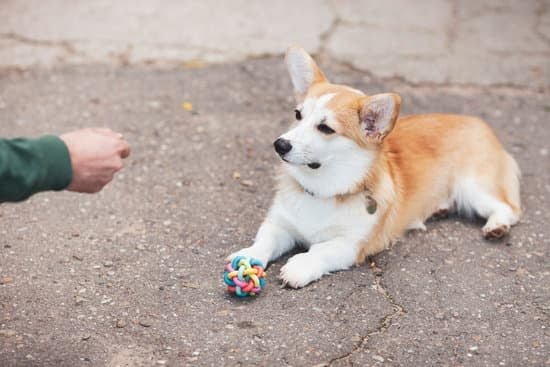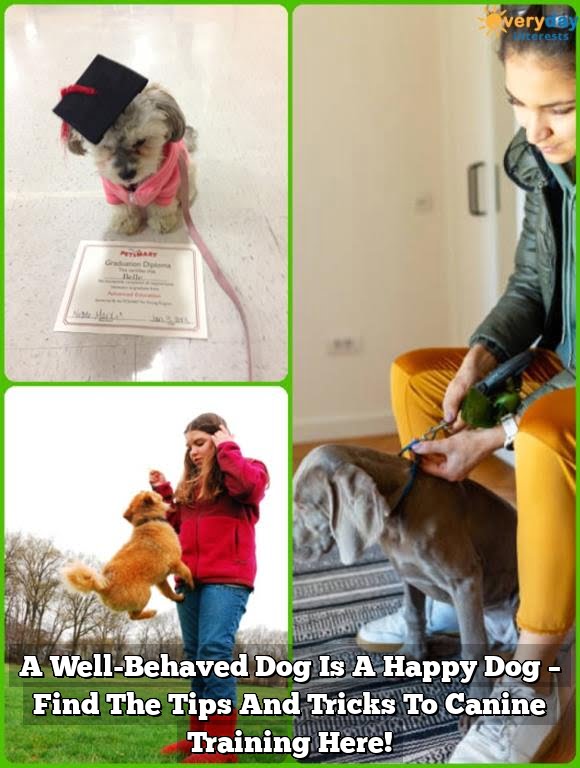Are you wondering how to train a dog new tricks? Training your canine companion to learn new tricks can be a fun and rewarding experience for both you and your furry friend. Not only does it provide mental stimulation and physical exercise for your dog, but it also strengthens the bond between you. In this article, we will explore the importance of training new tricks for your dog, as well as provide tips on how to effectively teach them.
When it comes to training new tricks, it is essential to understand the significance of this practice in enhancing your dog’s overall well-being. Teaching your dog new tricks helps keep their mind sharp and engaged, preventing boredom and destructive behavior. Additionally, learning new commands can improve their obedience and responsiveness to your cues, making them better-behaved companions in various situations.
Assessing your dog’s capability and willingness to learn new tricks is the first step in successful training. Every dog has different learning abilities and preferences, so it’s crucial to consider what motivates and excites your pet. By understanding their unique personality and temperament, you can tailor your training approach to suit their individual needs, ensuring a positive and effective learning experience.
Assessing Your Dog’s Capability and Willingness to Learn New Tricks
Before starting any new training regimen, it is important to assess your dog’s capability and willingness to learn new tricks. Just like humans, dogs have their own individual personalities and learning styles, so it’s essential to understand what motivates and excites your furry friend.
Start by observing your dog’s behavior and attitude towards learning. Some signs that indicate a dog is ready for training include eagerness to please, high energy levels, and a strong focus during training sessions. On the other hand, if your dog seems disinterested or easily distracted, it may take more time and effort to engage them in learning new tricks.
It’s also important to consider your dog’s physical capabilities. For example, larger breeds may excel at tricks that require strength and agility, while smaller breeds may perform better at tricks that involve quick reflexes and precision. By understanding your dog’s specific traits and tendencies, you can tailor the training process to fit their unique needs.
Additionally, consider any previous training experiences your dog may have had. If they have successfully learned basic commands or simple tricks in the past, they may be more open to taking on more advanced challenges. However, if your dog has had negative experiences with training in the past, it may take extra patience and encouragement to build their confidence in learning new tricks.
| Behavior | Capability |
|---|---|
| Eagerness to please | Indicates readiness for training |
| High energy levels | Motivates engagement in learning |
| Previous training experiences | Affects willingness to learn new tricks |
Choosing the Right Tricks to Teach Your Dog
When it comes to training your dog new tricks, it’s important to choose the right ones that are both suitable for your dog’s capabilities and enjoyable for both of you. The key to successful training is selecting tricks that align with your dog’s natural behaviors and instincts. Consider your dog’s breed, age, and individual personality when deciding on which tricks to teach.
Before deciding on the specific tricks to teach your dog, take some time to observe their behavior and interests. Some dogs may be more inclined towards physical activities, such as jumping or weaving through obstacles, while others may excel at mental tasks like solving puzzles or finding hidden objects. By understanding what motivates and excites your dog, you can choose tricks that will capture their interest and make the training process more enjoyable for them.
It’s also important to consider your own preferences and lifestyle when choosing tricks to teach your dog. If you enjoy spending time outdoors, agility-based tricks like weaving through poles or fetching specific items may be a good fit.
Conversely, if you prefer indoor activities, teaching your dog puzzle-solving tricks or even simple household chores like fetching the remote control can be both fun and practical. Ultimately, the goal is to select tricks that not only engage your dog but also enhance the bond between you through shared experiences.
| Key Factors in Choosing Tricks | Description |
|---|---|
| Dog’s natural behaviors and instincts | Consider how certain tricks align with your dog’s innate tendencies. |
| Observation of behavior | Observe what types of activities and games interest your dog. |
| Your own preferences | Consider which tricks align with your lifestyle and personal interests. |
Establishing a Strong Foundation With Basic Training Commands
Introducing Basic Training Commands
Before jumping into teaching your dog new tricks, it is essential to establish a strong foundation with basic training commands. These commands, such as sit, stay, come, and leave it, not only form the basis of more advanced tricks but also help to ensure your dog’s safety and obedience. It is crucial to make sure that your dog has mastered these basic commands before moving on to more complex tricks.
The Importance of Consistency
Consistency is key when it comes to teaching your dog basic training commands. It is important to use the same verbal cues and hand signals every time you ask your dog to perform a command. This consistency helps your dog understand what is expected of them and reinforces their learning. Additionally, consistency in training will set the stage for successfully teaching new tricks in the future.
Building a Positive Association
Incorporating positive reinforcement techniques into basic training commands can set the stage for successful trick training. Using treats, praise, and play as rewards for obeying commands will create a positive association with learning and performing tasks. This positive association will motivate your dog to continue learning and trying new things. By establishing a strong foundation with basic training commands using positive reinforcement techniques, you are laying the groundwork for successfully teaching your dog new tricks in the future.
By following these steps and taking the time to properly establish a strong foundation with basic training commands, you will set yourself up for success when it comes to teaching your dog new tricks. Remember that patience, consistency, and positive reinforcement are key elements in effective and successful dog training.
Using Positive Reinforcement and Reward-Based Training Techniques
Understanding Positive Reinforcement
Positive reinforcement is a powerful tool in dog training that involves rewarding your dog for exhibiting the desired behavior. This can be achieved through treats, praise, or playtime. When your dog associates performing a specific trick with a positive outcome, they are more likely to repeat the behavior. It is important to use rewards that are highly motivating for your dog and to deliver them at the right time to reinforce the behavior.
Implementing Reward-Based Training Techniques
When teaching your dog new tricks, it is essential to utilize reward-based training techniques effectively. This involves timing and consistency in providing rewards when your dog responds correctly. For example, if you are teaching your dog how to shake hands, you would reward them with a treat immediately after they raise their paw. By consistently following this pattern, your dog will learn to associate lifting their paw with receiving a reward.
Progressing With Training Challenges
As you progress in teaching your dog new tricks, it is important to gradually increase the difficulty level while maintaining the use of positive reinforcement. Once your dog has mastered basic tricks, you can introduce more complex behaviors and continue using rewards as an incentive. This approach encourages your dog to stay engaged and motivated throughout their training journey.
By using positive reinforcement and reward-based training techniques, you can create a fun and effective learning experience for your dog while strengthening the bond between you. Remember that patience and consistency are key when employing these methods to train a dog new tricks.
Consistency and Patience
Training a dog to learn new tricks requires patience and consistency. Dogs, like humans, need time to understand and master new skills. Consistent training sessions help reinforce these new behaviors and make it easier for your furry friend to learn. Here are some tips on how to train a dog new tricks:
- Set a regular training schedule: Dogs thrive on routine, so it’s essential to have consistent training sessions at the same time each day.
- Use the same cues and commands: Choose specific words or hand signals for each trick and stick to them. This will help your dog associate the cue with the behavior you want.
- Be patient: Some dogs may pick up new tricks quickly, while others may take longer to grasp them. Stay patient and always provide positive reinforcement during training sessions.
Consistency is crucial when teaching a dog new tricks. It’s important to remember that learning takes time, so be patient and keep practicing regularly. With dedication and perseverance, your dog will eventually master the new tricks you’re trying to teach.
Remember that each dog is different, so what works for one may not work for another. Be flexible in your approach and tailor your training methods to suit your dog’s individual needs. With consistent practice and plenty of patience, you’ll be amazed at what your furry friend can achieve.
Overcoming Challenges and Setbacks in Training
Training a dog to learn new tricks is not always smooth sailing. Just like humans, dogs can face challenges and setbacks when trying to master new skills. It’s important for dog owners to understand that these obstacles are a natural part of the training process and that overcoming them is possible with the right approach.
One of the most common challenges in training a dog new tricks is getting them to stay focused and attentive. Dogs can easily get distracted, especially in a new or unfamiliar environment.
To overcome this challenge, it’s crucial to create a training environment that is free from distractions and to gradually introduce distractions as the dog becomes more adept at performing the trick. Additionally, using high-value treats or rewards can help maintain the dog’s focus during training sessions.
Another common setback in training dogs new tricks is frustration, both on the part of the dog and the owner. Dogs may become frustrated if they don’t understand what is being asked of them or if they are not rewarded for their efforts.
On the other hand, owners may become frustrated if their dog doesn’t seem to be making progress as quickly as they had hoped. In such situations, it’s important for both parties to take a step back, remain patient, and reevaluate their approach to training.
Ultimately, overcoming challenges and setbacks in training comes down to perseverance and adaptability. Every dog is unique, and what works for one may not work for another. It’s important for dog owners to remain flexible in their training methods and to continuously assess what does – or does not – work for their individual pet. With dedication, patience, and an understanding of their dog’s behavior and learning capabilities, owners can successfully teach their furry companions new tricks.
Mastering Advanced Training Techniques for Complex Tricks
Once your dog has mastered the basic training commands and is responding well to positive reinforcement, you can move on to teaching them more complex tricks. Advanced training techniques require even more patience and consistency, but the sense of accomplishment when your dog successfully learns a new trick is incredibly rewarding. Here are some advanced training techniques to help you teach your dog complex tricks:
- Break It Down: When teaching a complex trick, break it down into smaller, more manageable steps. For example, if you want to teach your dog to fetch your slippers, start by teaching them to pick up an object in their mouth, then gradually introduce the specific item.
- Use Hand Signals: Incorporating hand signals alongside verbal commands can help your dog understand what is expected of them. For example, when teaching them to roll over, use both a verbal command and a hand signal to guide them through the motion.
- Consistent Practice: Just like with basic training, consistent practice is crucial for mastering complex tricks. Set aside dedicated time each day to work on the new trick with your dog.
It’s important to remember that not all dogs will be able to learn every complex trick, and it’s essential to consider your dog’s physical capabilities and limitations when deciding which tricks to teach them. Additionally, always prioritize positive reinforcement and patience during advanced training sessions.
Ultimately, mastering advanced training techniques requires dedication from both you and your furry companion. By breaking down the trick into smaller steps, incorporating hand signals, and consistently practicing with patience and positivity, you can successfully teach your dog new and exciting tricks.
Celebrating Success
In conclusion, training your dog to learn new tricks is not only a fun and rewarding experience but also a great way to strengthen the bond between you and your furry friend. By taking the time to understand your dog’s capabilities, choosing the right tricks to teach them, and establishing a strong foundation with basic training commands, you can set the stage for successful training.
Utilizing positive reinforcement and reward-based techniques will motivate your dog to learn and make the training process enjoyable for both of you.
Consistency and patience are essential when it comes to training a dog new tricks. It’s important to remember that every dog learns at their own pace, so being patient and understanding during setbacks is crucial. Overcoming challenges in training will ultimately lead to a deeper connection with your dog as you work through obstacles together.
As you and your dog progress in training, don’t forget to celebrate your successes along the way. Whether it’s mastering an advanced trick or simply making progress in basic commands, take the time to acknowledge and reinforce the bond with your dog.
Training new tricks should be a positive experience for both of you, strengthening your relationship while also providing mental stimulation for your pet. So grab some treats, keep practicing, and enjoy the journey of teaching your dog new tricks.
Frequently Asked Questions
What Is the Easiest Trick to Teach Your Dog?
The easiest trick to teach your dog is often “sit.” It’s a natural position for dogs and can be reinforced with a treat or praise. With consistency and patience, most dogs can learn this trick relatively quickly.
Can You Actually Teach an Old Dog New Tricks?
Yes, you can teach an old dog new tricks! While it may take more time and patience compared to training a young dog, older dogs are still capable of learning new behaviors and commands. Positive reinforcement and consistency are key.
What Is the Hardest Trick for a Dog to Learn?
The hardest trick for a dog to learn can vary from dog to dog, but some commonly challenging tricks include fetching specific items by name, complex agility maneuvers, or mastering advanced obedience commands like “stay” or “heel.” These tricks require a high level of focus and training.

Welcome to the blog! I am a professional dog trainer and have been working with dogs for many years. In this blog, I will be discussing various topics related to dog training, including tips, tricks, and advice. I hope you find this information helpful and informative. Thanks for reading!





